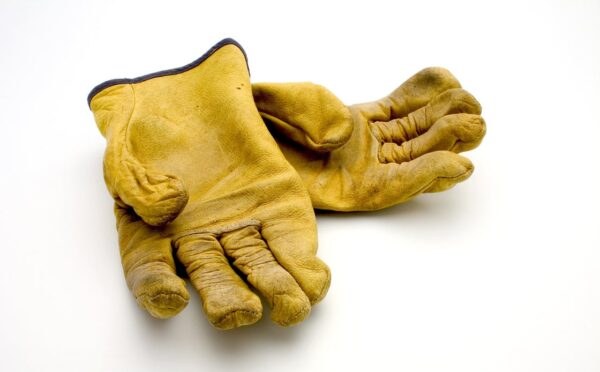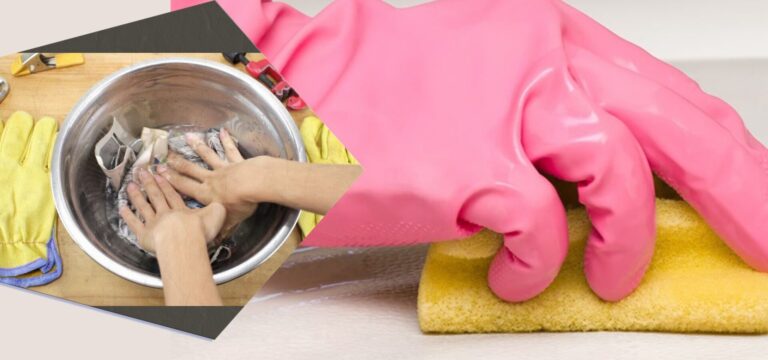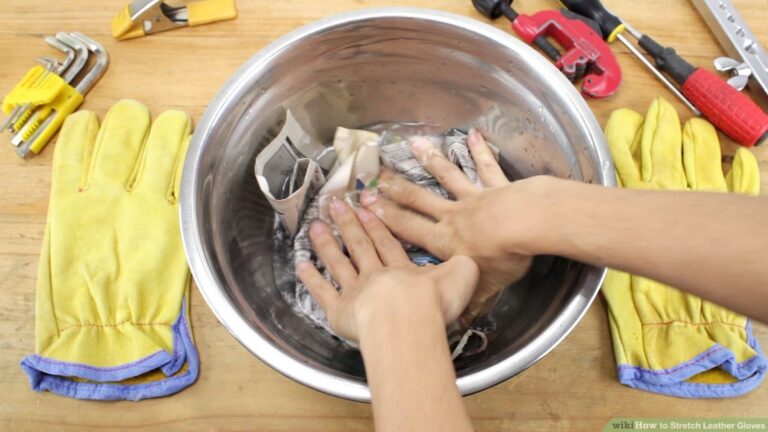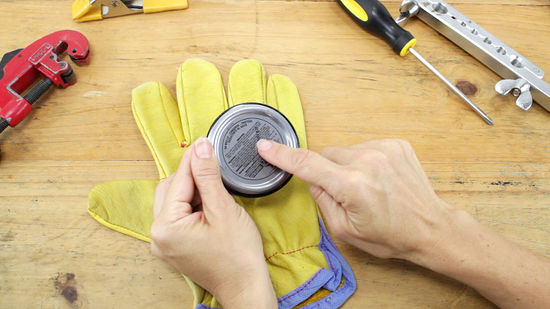Leather welding gloves are an essential protective gear for welders. They offer durability, heat resistance, and flexibility to ensure safety during welding operations. However, the leather welding gloves may become stiff during the working due to the heat of the welding torch even new leather welding gloves can sometimes be stiff and uncomfortable to wear and you are also unable to hold the rod.
Understanding Leather Welding Gloves
Leather welding gloves are typically made from high-quality cowhide or goatskin leather. These materials offer excellent heat resistance and protection against abrasions, cuts, and punctures. The construction of these gloves involves multiple layers of leather and stitching, providing enhanced durability and longevity.
How to Soften Leather Welding Gloves? Its Importance
Softening leather welding gloves is crucial for several reasons. Firstly, softened gloves offer improved flexibility, allowing welders to maneuver their hands and fingers more easily. This enhanced dexterity can significantly enhance productivity and precision during welding tasks. Additionally, softened gloves provide increased comfort, reducing the strain and fatigue experienced during prolonged use. By making your gloves more comfortable, you can focus on the task at hand without unnecessary distractions.
Preparing the Gloves for Softening
Before applying any softening method, it’s important to prepare your leather welding gloves properly. Start by cleaning the gloves thoroughly to remove any dirt or debris. Use a damp cloth or a leather cleaning solution to gently wipe the gloves. Allow them to air dry completely before proceeding with the softening process.

Method 1: Using Leather Conditioner
Step 1: Selecting a High-Quality Leather Conditioner
To soften your leather welding gloves, one effective method is to use a high-quality leather conditioner. Look for a conditioner specifically designed for leather products, ensuring that it does not contain any harmful chemicals that may damage the gloves. Choose a conditioner that nourishes the leather, keeping it supple and preventing it from drying out.
Step 2:Applying the Leather Conditioner
Start by applying a small amount of leather conditioner to a clean, dry cloth. Rub the conditioner into the gloves using circular motions. Ensure that you cover the entire surface of the gloves, paying extra attention to the seams and areas that feel particularly stiff.
Step 3:Allowing the Gloves to Absorb the Conditioner
After applying the conditioner, allow the gloves to absorb the product. Place them in a cool, dry area and let them sit for a few hours or overnight. The leather will gradually absorb the conditioner, softening and moisturizing the material.
Step 4:Repeating the Conditioning Process
If necessary, repeat the conditioning process multiple times until you achieve the desired level of softness. Remember to follow the manufacturer’s instructions on the conditioner bottle to avoid overusing the product.
Method 2: Using Mink Oil
Step 1:Choosing a Suitable Mink Oil
Mink oil is a natural oil derived from the fat of mink. It is commonly used to soften and condition leather due to its moisturizing properties. When selecting a mink oil product, ensure it is specifically designed for use on leather items.
Step 2: Applying Mink Oil to the Gloves
Using a clean cloth, apply a small amount of mink oil to the gloves. Gently massage the oil into the leather, paying attention to the areas that feel stiff. Make sure to cover the entire surface of the gloves evenly.
Step 3: Allowing the Gloves to Absorb the Oil
After applying the mink oil, allow the gloves to sit for a few hours or overnight. This allows the oil to penetrate the leather fibers, moisturizing and softening them.
Step 4: Buffing the Gloves
Once the gloves have absorbed the oil, use a clean, dry cloth to buff them gently. This helps to remove any excess oil and gives the gloves a polished appearance.
Method 3: Using Neatsfoot Oil

Step 1: Selecting Neatsfoot Oil
Neatsfoot oil is another popular option for softening leather. It is derived from the shin bones and feet of cattle, making it an ideal choice for conditioning and softening leather welding gloves. Look for pure neatsfoot oil without any additional additives or chemicals.
Step 2: Applying Neatsfoot Oil to the Gloves
Pour a small amount of neatsfoot oil onto a clean cloth and rub it onto the gloves. Work the oil into the leather using circular motions, ensuring thorough coverage. Focus on the areas that feel stiff or rigid.
Step 3: Allowing the Gloves to Soak the Oil
After applying the oil, allow the gloves to sit for several hours or overnight. This gives the leather enough time to absorb the oil, making it more supple and flexible.
Step 4: Wiping off Excess Oil
Using a dry cloth, gently wipe off any excess oil from the gloves. This step is crucial to prevent the gloves from becoming greasy or slippery when you wear them.
Method 4: Using a Leather Softening Solution
Step 1: Choosing a Leather Softening Solution
Leather softening solutions are specifically formulated to make leather more pliable. Look for a high-quality leather softening solution that is suitable for welding gloves. Read the product instructions carefully before applying it to your gloves.
Step 2: Applying the Softening Solution
Pour a small amount of the softening solution onto a clean cloth or sponge. Gently rub the solution into the gloves, focusing on the areas that need softening. Ensure that you cover the entire surface of the gloves evenly.
Step 3: Allowing the Solution to Penetrate the Leather
After applying the softening solution, allow the gloves to sit for the recommended time specified on the product label. This allows the solution to penetrate the leather and soften it effectively.
Step 4: Removing Excess Solution
Once the recommended time has passed, use a clean, dry cloth to wipe off any excess softening solution from the gloves. This step prevents the gloves from feeling sticky or greasy when you wear them.
Method 5: Using Heat
Step 1: Using a Hairdryer
Using a hairdryer is a simple and effective way to soften leather welding gloves. Hold a hairdryer at a moderate heat setting and direct the warm air onto the gloves. Move the hairdryer in a circular motion to evenly distribute the heat. As the leather heats up, it becomes more pliable. Be careful not to hold the hairdryer too close to the gloves to avoid damaging the leather.
Step 2: Heating the Gloves with an Oven
If you don’t have a hairdryer, you can use your kitchen oven to soften the gloves. Preheat the oven to a low temperature (around 150°F or 65°C). Place the gloves on a baking sheet or aluminum foil and put them in the oven for a few minutes. Keep a close eye on the gloves to prevent overheating or scorching. Once the gloves feel warm and pliable, remove them from the oven.
Step 3: Steaming the Gloves
Another method to soften leather welding gloves is by steaming them. Boil a pot of water and hold the gloves over the steam, ensuring they are not in direct contact with the water. Allow the steam to penetrate the leather for a few minutes. This process helps to relax the fibers, making the gloves more flexible.
Is Olive Oil Suitable for Moisturizing Leather Gloves

Olive oil can be a suitable option for moisturizing leather gloves to some extent. It possesses natural moisturizing properties that can help condition and soften the leather material. When applied in moderation, olive oil can penetrate the pores of the leather, providing hydration and preventing it from becoming dry and brittle.
However, it’s crucial to exercise caution when using olive oil on leather gloves. Since leather is a delicate material, excessive application of any oil, including olive oil, can lead to undesirable effects. Too much oil can cause the leather to become overly greasy, attract dirt, and potentially stain or damage the gloves.
To properly moisturize leather gloves with olive oil, start by applying a small amount to a clean, soft cloth. Gently rub the cloth onto the surface of the gloves, focusing on areas that appear dry or cracked. Allow the gloves to absorb the oil for a few hours or overnight, then use a dry cloth to remove any excess oil.
It’s worth noting that there are dedicated leather conditioners available on the market that are specifically designed for treating leather goods. These products are often formulated to provide optimal conditioning without the risk of causing damage. If you want to ensure the best care for your leather gloves, it’s advisable to consider using a leather conditioner recommended for this purpose.
Can Coconut Oil Be Used to Moisturize Leather Gloves
Coconut oil can be used as a natural alternative to moisturizing leather gloves. It possesses hydrating properties that can help nourish and condition the leather material. When applied in moderation, coconut oil can penetrate the leather, keeping it supple and preventing it from drying out.
However, it’s important to exercise caution when using coconut oil on leather gloves. Like other oils, using too much coconut oil can lead to undesirable effects. Excessive application may cause the leather to become overly greasy, attract dirt, and potentially stain or damage the gloves.
To moisturize leather gloves with coconut oil, start by applying a small amount to a clean, soft cloth. Gently rub the cloth onto the surface of the gloves, paying extra attention to dry or cracked areas. Allow the gloves to absorb the oil for a few hours or overnight, and then use a dry cloth to remove any excess oil.
While coconut oil can be a suitable option for moisturizing leather gloves, it’s worth noting that there are dedicated leather conditioners available on the market that are specifically formulated for treating leather goods. These products are often designed to provide optimal conditioning without the risk of causing damage. If you want to ensure the best care for your leather gloves, it’s advisable to consider using a leather conditioner recommended for this purpose.
Is Vaseline Suitable for Moisturizing Leather Gloves?
Vaseline is not the most suitable option for moisturizing leather gloves. While it may provide a temporary shine or gloss to the leather surface, it is not an ideal moisturizer for leather. Vaseline is a petroleum-based product that primarily creates a barrier on the skin rather than deeply nourishing or conditioning it.
When applied to leather gloves, Vaseline can leave a greasy residue that may attract dirt and dust, potentially staining or damaging the gloves over time. Additionally, the petroleum-based nature of Vaseline may not be compatible with all types of leather, leading to discoloration or a loss of the leather’s natural characteristics.
For proper moisturization and conditioning of leather gloves, it is recommended to use products specifically designed for leather care. Leather conditioners and moisturizers are formulated to penetrate the leather fibers, providing nourishment, softening the material, and helping to maintain its integrity. These products are usually available in specialized leather care sections and are designed to protect and enhance the quality of leather goods.
It’s important to follow the instructions provided by the leather conditioner manufacturer to ensure the best results and to extend the lifespan of your leather gloves.
Caring for Softened Leather Welding Gloves

Once you have successfully softened your leather welding gloves, it’s important to maintain their softness and extend their lifespan. Here are a few tips to help you care for your gloves:
- Keep them clean: Regularly clean your gloves with a mild leather cleaner and a soft cloth to remove dirt and debris.
- Avoid excessive moisture: Leather is susceptible to damage from excessive moisture. Keep your gloves away from water and ensure they are thoroughly dried if they get wet.
- Store them properly: When not in use, store your gloves in a cool, dry place away from direct sunlight. Consider using a glove bag or wrapping them in a soft cloth to protect them from dust and scratches.
- Avoid extreme temperatures: Leather can be negatively affected by extreme temperatures. Avoid exposing your gloves to excessive heat or cold.
By following these care tips, you can keep your leather welding gloves soft and in good condition for an extended period.
Conclusion
Softening leather welding gloves is a straightforward process that can greatly enhance their comfort and usability. By using methods such as leather conditioner, mink oil, neatsfoot oil, leather softening solutions, or heat, you can transform stiff gloves into supple and flexible ones. Remember to choose the method that suits your preferences and the materials available. Additionally, proper care and maintenance will ensure the longevity of your softened gloves, providing you with comfort and protection during welding operations.

